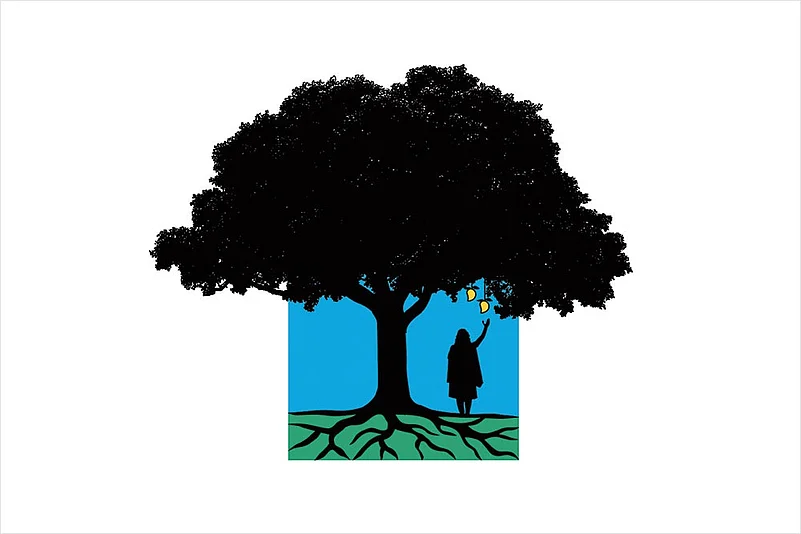I was born in the Caribbean but have lived in India a long, long time. So I sometimes find myself starting a sentence talking about ‘we’ who speak Creole languages and in the next breath segueing smoothly to ‘we’ who speak Indian languages. Could I really be in Trinidad and in India at the same time?
Trinidad Diary
She was born in the Caribbean but has lived in India a long time. In this diary, Peggy Mohan writes about the similarities between India and Trinidad.

Some years ago, I went back to Trinidad to see my mother. She met me at the airport looking a few years older, handed me the keys to her car and I drove us back home. The phone was ringing and I rushed inside to answer. Someone who had no idea that I had ever been away wanted to talk to me about a piece I had written. And another life resumed. That was when I realised that I could. That when I ‘snoozed’ India, my eyes opened again in Trinidad!
When I first came to India I kept being told that my Bhojpuri was different: it didn’t sync with any district in India. But over the years, Indian Bhojpuri has caught up with us and now, with a more general Bhojpuri emerging, people have begun to see me as a historical resource.
‘Do you also have litti-chokha in Trinidad?’
‘No, only chokha. Mostly tomato chokha, but also baigan.’
‘Aloo?’
‘I saw aloo chokha once when I was a kid.’
‘How come no litti?’
The truth is that when we left India there was no wheat yet in Eastern UP and Bihar. People ate rice. Wheat from North India did not go there. But wheat did get to Cochin and Calcutta via ships from Britain and Europe. Not whole wheat flour, but white flour, the only thing that could survive a long sea voyage without rotting. That is why Malabar parathas and Bengali lucchis are still made from white flour. Our ancestors saw their first rotis in Garden Reach depot while they were waiting for the Hooghly to fill with monsoon rain and get deep enough for the big ships.
To this day we have no word for whole wheat flour in our Bhojpuri. The word ‘atta’ doesn’t exist! But we do have a word for white flour: phoolawa. From the English ‘flour’, yes, but with a little bit of ‘flower’ too.

It must have been a shock for villagers from the Bhojpuri heartland to find themselves at sea. It took anywhere up to two months to get to Trinidad, and the hardest part of the journey was at the bottom of Africa. They called it the pagla samundar, the mad sea where the Indian Ocean and the Atlantic meet, because everyone got royally seasick huddling in the holds while storms and tall waves raged outside.
I always think this was the point when caste got blown away. Who would want to cross that stretch again to go back? The fine distinctions vanished. If there was only one teli, oil presser, on board, who could he marry? So more general groups emerged, making it easier for men to find wives. But there was a new hiccup: everyone who had come on the same ship was now family, and family could not marry each other. They even called each other jahaji-bhai and jahaji-bahen. I still remember my grandmother once explaining why two young people in love were having problems with their parents about getting married.
‘Their families are jahajis.’ They had come on the same ship.
Back in the 1970s when I went to Guyana I was excited to see a familiar sight: a Roti Shop, the Caribbean name for a dhaba. I went in, and with my best Trini charm asked for a dalpuri (a paratha stuffed with ground dal) and aloo.
Everyone burst out laughing. ‘You don’t know we haven’t seen dal or aloo here for years?’
In the Caribbean, dal is always dried split peas, imported from North America. Peas don’t grow in the tropics, neither do potatoes, so dal and aloo are imported items. Ditto the white flour for our rotis.
Guyana was trying hard to reduce its import bill, but taking away our rotis would have been a bit much.
What about arhar dal? It grows well in the tropics.
Yes, but in Trinidad we eat it fresh and call it pigeon peas. A few families in the countryside know that it can be made into dal, they call it ‘peas dal’. So we have a flip-flop: for us peas are dal, and arhar dal is known as peas!
If there is any place on Earth where -mangoes are as good as they are in India, it is Trinidad. Not the Caribbean: just Trinidad. In Trinidad you will find a close cousin of the Alphonso, also grafted, and known as the Julie. We also have the little chuski aam and we call it by its Creole name, doux-douce. And lots of other kinds, some of them new varieties.
So I agree that other countries just don’t make the cut mango-wise. Only India…and Trinidad!
( The author is a linguist and a writer)

























